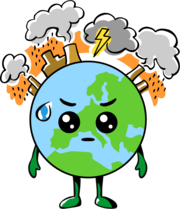Name of the environmental zone: Environmental zone Groningen - Netherlands
Date of entry into effect of the zone: 01-01-2017
Type of environmental zone: Permanent, 12:00 pm to 05:00 am
Not allowed to drive (temporarily): Information currently unavailable
Not allowed to drive (permanently): Vehicle class: vans (N1), trucks (N2), heavy trucks (N3)
Fuel type: all (except electric/hydrogen)
Euronorm: all
Fines: 200 €
Area/extension of the environmental zone: The driving ban applied to the city centre of Groningen. Strategically important roads are closed in such a way that neither driving nor passing through the zone is possibile.
Special features: Between 5 am and 12 pm, any vehicle may enter the zone irrespective of fuel and Euro standard.
Contact of the environmental zone and exceptions: Municipality of Groningen
P.O. Box 30026
9700 RM Groningen
Exemptions: Vintage car older than 40 years, Residents (registration/application necessary), Fire brigade (registration/application necessary), Sweeper (registration/application necessary), Patient transport (registration/application necessary), Police car (registration/application necessary) and Security company (registration/application necessary)
What is an environmental zone (LEZ/ZFE/ZBE)?
An environmental zone is a specific area in a city or region that is protected by regulations and restrictions to improve air quality. These zones are usually established to reduce emissions of pollutants such as nitrogen oxides and particulate matter, which are responsible for poor air quality in many cities.
In these zones, certain rules apply to vehicle access based on vehicle emissions. This may include imposing driving bans on certain types of vehicles, such as older diesel vehicles, or requiring the creation of an eco-label for vehicles. This mark, which must be affixed to the vehicle, confirms that the vehicle complies with the applicable emission regulations and is therefore authorized to drive in the low emission zone.
The introduction of low emission zones has led to a significant improvement in air quality in many cities. It has been observed that emissions of nitrogen oxides and particulate matter have been reduced in these zones, thereby improving the health of residents. The number of respiratory diseases and cardiovascular diseases also decreased.
However, it is not just the introduction of environmental zones alone that can lead to an improvement in air quality. It is necessary to take other measures to reduce emissions overall. These include, for example, promoting electromobility, increasing energy efficiency and creating alternative means of transportation such as bicycles and public transportation.
Environmental zones are an important tool to improve air quality in cities and regions and reduce the impact of air pollution on the health of residents. They are used in many European countries and have shown to have a positive effect on air quality.
Environmental zones are also known in other countries as Environmental Zones, Clean Air Zones (England), Miljøzone (Denmark), Miljözon (Sweden), Lavutslippssone (Norway), Alacsony Kibocsátási Övezet (Hungary), Zona ambientale (Italy), Umweltzonen (Germany), Milieuzones (Netherlands), ZFE - Zone à Faibles Émissions (France) and Lage-emissiezone (Belgium), ZBE - Zona de baixes emissiones (Spain).
Winter zone: There are environmental zones which are only seasonally active or have stricter rules for certain months. This means that these zones are active, for example, from September 15 to April 15 of the following year. Outside of this time, no or less strict driving restrictions apply and you can drive freely. One country with many winter zones is Italy.
What is a Zero Emission Zone (ZEZ)?
ZEZ stands for "Zero Emission Zone", which in German means "Null-Emissions-Zone". A ZEZ is a specific area in a city or region where only zero-emission vehicles are allowed. This means that only electric vehicles, hydrogen vehicles, and other alternative-powered vehicles that emit no pollutants are allowed in these zones.
The introduction of ZEZs is part of an effort to improve air quality in cities and regions and reduce the impact of air pollution on residents' health. By restricting access to these zones by vehicles with high emissions, air quality is improved.
Some cities and regions have already begun implementing ZEZs, while others have planned to do so in the near future. Examples of cities that have planned ZEZs include London, Madrid, and Paris.
It should be noted that the introduction of ZEZs not only improves air quality, but also helps to combat climate change by reducing greenhouse gas emissions. It is also a way to support the transportation transition by encouraging the use of electric vehicles and other zero-emission vehicles.
Do I need stickers or registrations?
No. Here you do not need to buy a sticker or apply for registration. You only have to follow the rules of entry.
Our Green-Zones App helps you to avoid penalties.



How do I recognize the low emission zone?
Unfortunately there are no exact street signs known. Therefore it is difficult to know when you are in the environmental zone.
Our Green-Zones App helps you to avoid penalties.
Good to know...
All current driving bans and further information are available in our Green-Zones App.
Are night-time environmental zones coming?
The Berlin Green Party recently presented a proposal to equalise the traffic congestion in the capital. The idea is to shift delivery and commercial traffic to the night-time hours. According to Antje Kapek, transport spokesperson for the Greens, this proposal should help to ensure that delivery vehicles, refuse collection, care services and doctors get stuck less in congested and parked-up streets during the day. Low-noise and low-emission lorries could increasingly drive into cities at night and on special routes.
Bicycle instead of car - Paris in transition
A study by a public foundation has shown that more than one in ten journeys in Paris and the surrounding area are made by bicycle. This is a remarkable increase compared to 14 years ago, when less than one in thirty journeys were made by bike. Paris seems to have been endeavouring to change its transport policy for years. With more cycle paths and cycle lanes, fewer car parks and higher parking charges, the city is trying to promote cycling and reduce car traffic. But what does this mean for the existing low emission zone?

![[Translate to Englisch:]](https://www.green-zones.eu/fileadmin/_processed_/8/3/csm_screenshot_2024-04-18_125614_c7d9eca4a5.png)
![[Translate to Englisch:]](https://www.green-zones.eu/fileadmin/_processed_/2/0/csm_screenshot_2024-04-18_121908_5e1053efaf.png)